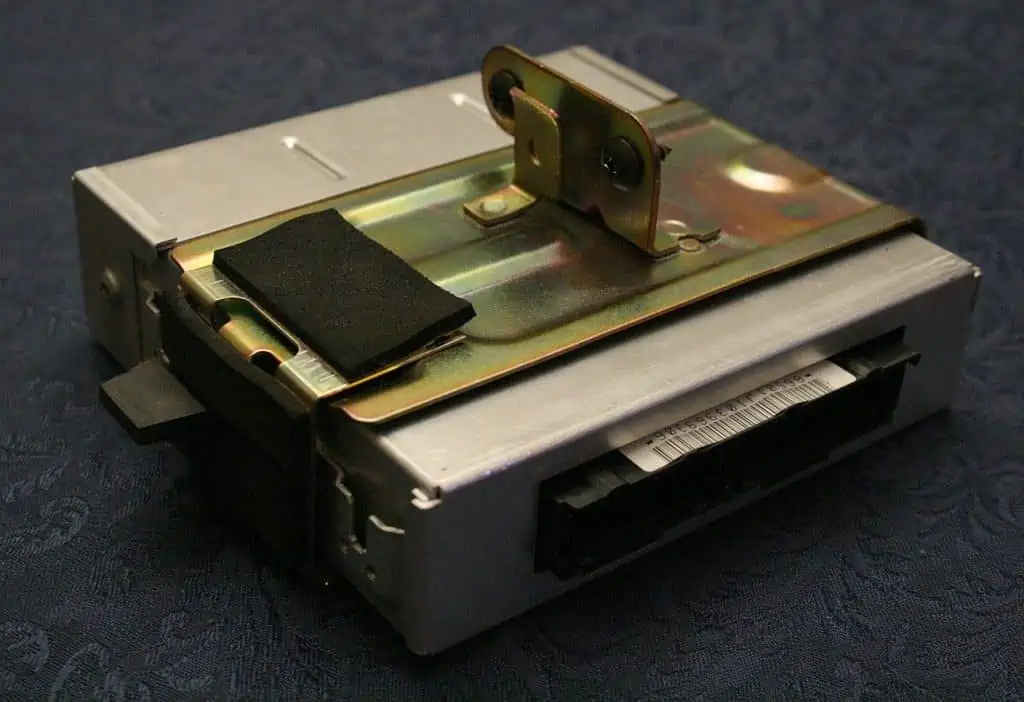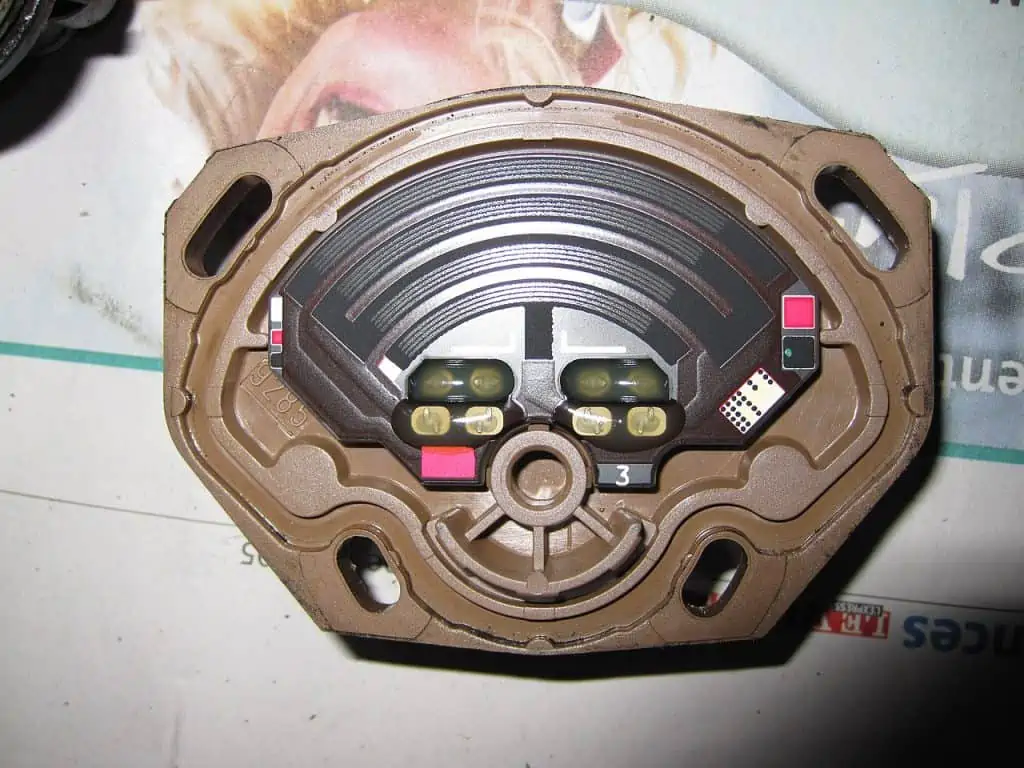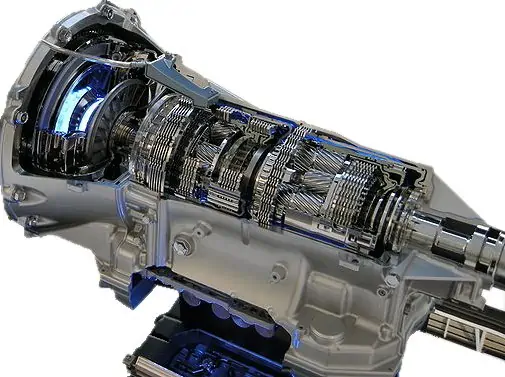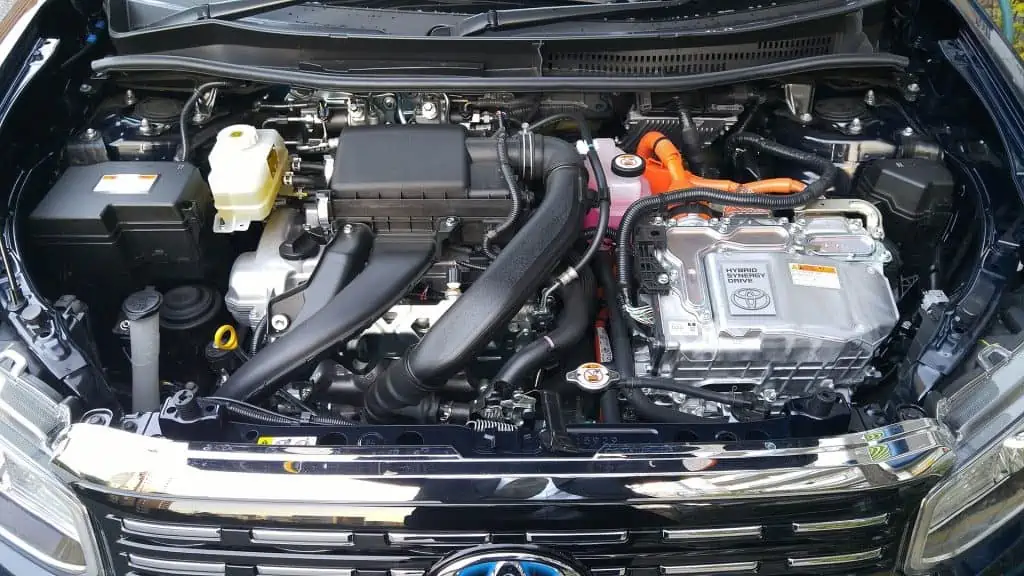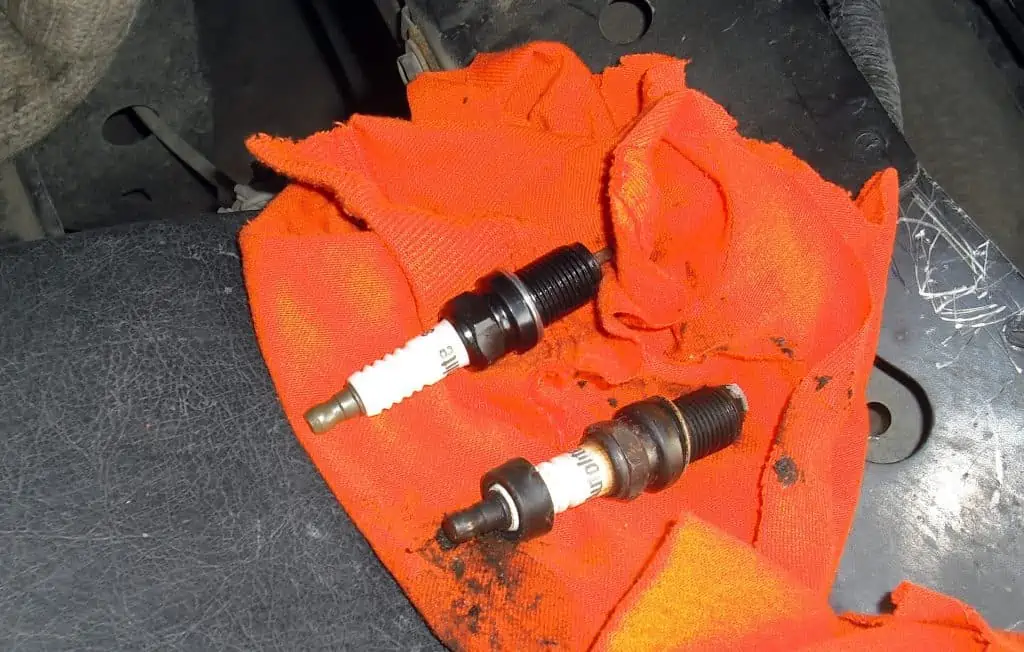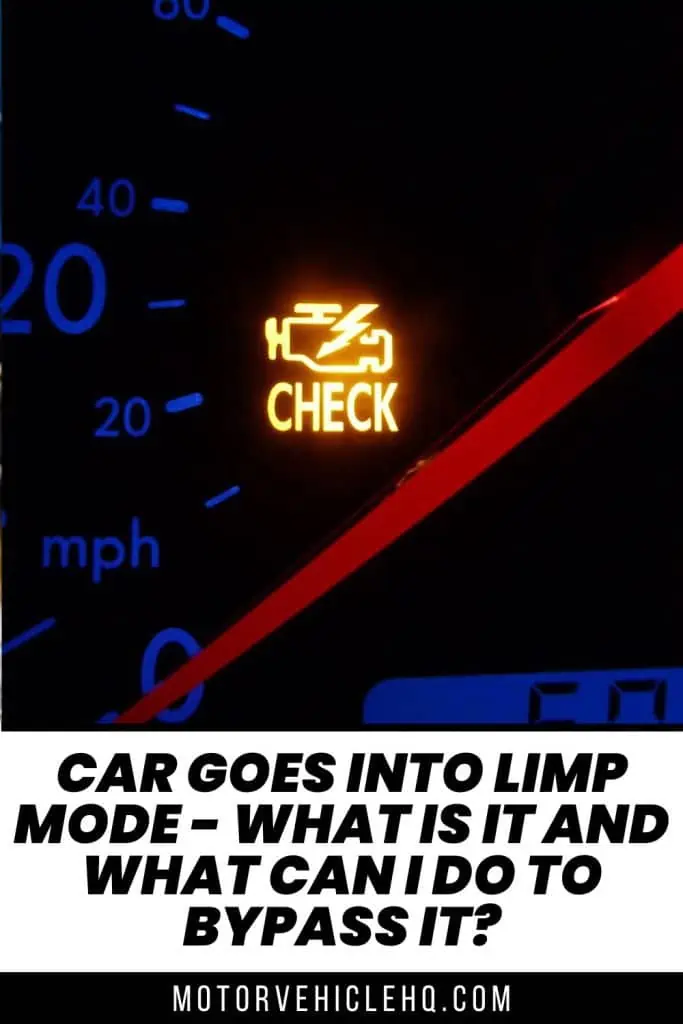Nearly every aspect of an automobile today is controlled by a computer, including the transmission line pressure, shift time, sequencing, and sensation. With the use of its speed sensors, the anti-lock brake system, fuel ratio, fuel injection system, and gearbox operation may all be controlled.
For instance, your car’s throttle position sensor (TPS) and manifold absolute pressure (MAP) sensor both provide information on how much load your engine is under and are used to control how often your transmission shifts while you’re driving. That’s only one illustration of how advanced modern autos are.
Imagine you’re traveling through the city when your car’s transmission starts working strangely and your check engine light appears right away. When this warning light flashes quickly, your engine almost certainly has a problem.
Your car is in Limp Mode if the transmission quickly shifts to second or third gear and stays there.
Your car has less power when it is in Limp Mode and moving at a slower speed since it can only shift into one gear. But what exactly is a Limp Mode? How can you get your car out of limp mode?
Not everyone is an expert in cars, so when your automobile starts acting strangely for no apparent reason, it may be rather scary. The occurrence of limp mode is one instance of this. You might be perplexed and afraid. However, keep your cool.
We’ve compiled all the information you need to know about the limp mode, including how to fix it and the risks involved with using it, often known as “Fail Code” or “Limp Home Mode.”
You’ll discover some basic information about this event as well as how to prepare yourself and handle it. Learn more by reading on!
Limp Mode: What Is It?
The transmission control unit (TCU) or engine control unit (ECU) employs a precise calibration or map known as “limp mode” or “limp home mode” when one of your powertrain’s components senses a potentially dangerous problem.
Consider your car’s limp home mode as a safety feature or mode designed to prevent or reduce the engine’s future harm.
A car Engine Control Module (ECM) by Specious / CC BY-SA 3.0. When one of the parts of your powertrain detects a potentially dangerous issue, the transmission control unit (TCU) or engine control unit (ECU) applies a precise calibration or map known as “limp mode” or “limp home mode”
This calibration allows you to safely “limp home” or drive to a technician for diagnosis and repair rather than completely shutting down its engine and leaving you stuck somewhere.
The check engine light could come on if your car enters limp mode. The system will carry out several operations that limit the vehicle’s maximum performance to a safe and appropriate level.
As a rich air/fuel mixture is frequently far better than a low air/fuel ratio, the majority of engine calibrations are running rich.
The ECU can also reduce the maximum speed of your engine when it is in limp mode, change the ignition timing (delay the time at which each cylinder ignites), or change the valve timing (alter the time at which the intake/exhaust valve opens).
If your car has a turbocharger, the map will very definitely run with the turbo wastegate open to lower boost pressure.
This boost pressure is unquestionably several orders of magnitude lower than the greatest boost pressure often observed during normal operations.
Your transmission may shift into second or third gear and stay there whenever a malfunction in the gearbox is detected. As a result, the engine accelerates slowly and operates at a substantially higher speed on the road.
Why Does a Car Go Into the Limp Mode?
Several things could cause your automobile to enter limp mode. The most frequent and easy-to-spot causes are as follows.
Get your car checked out by a professional even if it doesn’t show any of the above problems. Expert mechanics can identify the precise reason why the limp mode occurs.
You should check your car for any of the following problems. However, if you don’t have any of them, it doesn’t necessarily mean that your car is in great condition.
If you are unable to identify the issues on your own, seek help from a mechanic. The most important thing is to act promptly. If your automobile is in limp mode, avoid driving it for extended periods to prevent further damage.
1. Low Level of Transmission Fluid
The transmission is a set of gears that helps the engine deliver power to the wheels more effectively. It requires a lubricant to lessen friction and heat since the internal gears endure a lot of friction. This maintains the efficiency of your transmission and increases its life.
Normally, the transmission fluid must be changed every 30,000 to 50,000 miles. The transmission won’t be lubricated as well if the fluid is old. Additionally, if the gasket or pan is worn out or damaged, transmission fluid may leak.
Lack of fluid might cause the transmission to lose pressure and stop functioning properly. Additionally, if there isn’t enough fluid, the transmission won’t be properly greased. An overheated transmission will result from this as it increases heat and friction.
Transmission overheating might result in serious damage. To limit the transmission’s performance and avoid damage, this is why it would activate the limp mode.
2. Faulty Wiring
The engine of your car is wired with all the electrical cables. They provide all the energy your car needs to run.
The electrical system is therefore one of the most important parts of your car’s internal workings. The most fragile systems are likely electrical ones.
The wires may deteriorate or fail due to engine heat, extreme cold, moisture, and grime. These damaged wires may cause interference with the other systems in your car, bringing on Limp Mode.
Inside the throttle position sensor by The RedBurn / CC BY-SA 4.0. The majority of modern vehicles supply the car’s computer with condition-related data using a speed sensor, a Manifold Absolute Pressure (MAP), and a Throttle Position Sensor (TPS).
A broken wire, for instance, can be preventing the engine management unit from properly operating the boost pressure sensor.
In addition, a defective boost pressure signal may cause your engine control unit to enter limp mode to prevent danger.
3. Failure of the Transmission or Clutch
Your automobile may also enter limp mode if the clutch or transmission linkages have failed or are out of alignment. This will protect the transmission from further strain or harm and spare you from having to pay for an expensive overhaul.
Your gears are shifted by the linkage; if it were to break, the transmission would have problems shifting. Because your car will only use one gear in limp mode, this is why it activates limp mode.
You can have a bad solenoid if your transmission is automatic. An electro-hydraulic solenoid is what enables the automatic gearbox to shift gears by controlling the flow of transmission fluid.
A malfunctioning solenoid will be unable to do its duty, affecting the transmission’s functionality. You’ll notice that your transmission is sluggish or even stubborn when it comes to shifting ratios. To protect the transmission, the automobile will enter limp mode when the issue is severe enough.
4. Possible Engine Misfires
Knocking sounds coming from your engine typically signify several potential problems. Your engine’s poor or incorrect air/fuel mixture is what’s making the noises.
You’ll not only get a check engine light if your car frequently knocks or misfires, but you’ll also get limp mode as an added benefit!
5. Possible Instances of the Car Overheating
When the cooling system in your car isn’t working properly, it can’t handle the heat that the engine produces and can eventually overheat. This could harm the vehicle’s parts and reduce its operation.
Your car can enter Limp Mode if it overheats frequently. To allow cold air to cool your overheating engine, its engine control unit will limit power to some areas of your engine.
6. Instances of Over Boost Occurring
When a turbocharged engine uses more air than the engine control unit (ECU) allows, over-boost happens. This improves the performance of your engine at the expense of possible damage.
The ECU enters Limp Mode when it detects an over-boost condition brought on by a component failure. This eliminates the chance of serious engine failure.
7. Defective Sensors
The car is a tremendously intricate piece of technology that requires numerous sensors to ensure that everything functions as it should. The majority of contemporary cars use a speed sensor, a Manifold Absolute Pressure (MAP), and a Throttle Position Sensor (TPS) to provide the car’s computer with several pieces of condition-related data.
The transmission is then instructed when to upshift or downshift using this information. For instance, if the car notices you’re depressing the brake, it will immediately downshift since it assumes you want more power and to move quickly.
How does this result in the vehicle entering limp mode? The computer in your car is built to accept data within a pre-programmed range that the manufacturer has defined. It will enter “secondary” programming, or limp mode if it gets information outside of this range.
An automatic transmission cut by Silverxxx / CC BY-SA 3.0. If the clutch or transmission linkages are broken or are out of alignment, your car can potentially go into limp mode. By doing this, you will prevent further stress or damage to the transmission and avoid having to pay for an expensive overhaul.
Let’s take an example where the TPS is intended to deliver data between the range of “1-10.” Your car’s computer will presume there is a TPS sensor malfunction if it unexpectedly receives a value of “12.”
Then, to stop any damage from occurring, the limp mode is activated. Of course, this is oversimplifying things, but this is how things usually go. The sensor could transmit inaccurate data if it has a problem, putting the vehicle in fail-safe mode.
8. Instances of the Vacuum Leak or Boost
When your engine receives more air than the ECU allows, a vacuum leak or boost leak occurs. The distinction is that faulty air intakes result in a boost or vacuum leak. When the ECU detects that the air/fuel ratio is out of the expected range, Limp Mode and your check engine light are activated.
9. Absence of Emission Components
When you modify your car to remove the muffler, you also remove a sensor that is connected to it. The ECU will enter Limp Mode if it discovers that certain sensors have been missing.
Additionally, automakers devote a lot of time and money to the engineering of the entire car. This includes the emission-control machinery owned by the business.
10. Faulty Spark Plugs
Spark plug wear is another issue that frequently causes limp mode. The check engine light may continue to be on or flicker when the automobile is in limp mode. In the event of a misfire, your engine may run poorly and may even quiver.
Cylinder misfires, in which one or more of your cylinders stop working, can sometimes be caused by a malfunctioning ignition coil or a defective spark plug. An unreliable MAF sensor or a clogged catalytic converter may be to blame for an engine misfire.
Your catalytic converter will be harmed if you continue to drive a car with misfiring cylinders, and your engine will be more likely to overheat.
Which are the Common Symptoms of the Limp Mode?
Finding out if your car is already in limp mode or experiencing other issues is difficult, especially if you don’t know what to look for.
It’s important to be aware that several automotive issues can be confused for limp mode. However, your car doesn’t go into limp mode every time it has a problem.
The check engine light, poor engine power, speed restriction, or locked gear are the most common signs of limp mode. The most typical limp mode warning signs and symptoms are listed in further detail below.
1. Limited Speed and Poor Performance
Your ECU lowers the speed and performance of your engine when it is in limp mode. This suggests that your maximum speed will be between 30 and 45 miles per hour.
The goal of the limp mode is to protect your car from further damage. The typical RPM limit for cars in limp mode is between 2,000 and 3,000. The car’s manufacture and model determine the maximum RPM.
This lessens the stress and heat that is produced inside your engine and all but guarantees that any current engine issues won’t become worse.
A car engine by CEFICEFI / CC BY-SA 4.0. A vacuum leak or boost leak happens when the engine receives more air than the ECU is designed to handle. With defective air intakes, there is a boost or vacuum leak, which is different. The vehicle enters Limp Mode and the check engine light turns on when the ECU notices that the air/fuel ratio is outside of the desired range.
You could immediately check your RPM on your dash. The RPM is typically expressed in thousands, indicating that your car will only reach an RPM of 2 to 3 on the dashboard.
2. Car Won’t Shift Past the Third Gear
It’s a solid sign that your car is in limp mode when it won’t shift out of third gear.
Automobiles with automatic transmissions are more likely to exhibit this symptom. The transmission won’t be able to move out of third gear because of the computer in your car.
This has to do with keeping your speed or RPM low. In some situations, it could be challenging to determine whether you are moving less than 40 mph.
3. The Accelerator Pedal Becomes Non-Responsive
Your accelerator pedal is certainly used to being responsive, but when in limp mode, it frequently loses precision.
Newer cars typically make this more obvious. However, your car might be in limp mode if you need to apply more pressure before the engine revs.
Another approach to make sure that this shift is unconnected to other issues is that it frequently happens suddenly. Most of the time, wear and tear or damaged accelerator parts cause the lack of responsiveness of the accelerator pedal to happen gradually.
When your engine goes into limp mode, the transition is seamless and protects both you and your vehicle from risky driving circumstances.
4. The Car Engine Overheats
You might notice your engine overheating in dire situations. This is a cautionary sign informing you to stop and let your car cool down before continuing. Your engine and transmission may experience less damage if you give them some time to rest.
5. The Engine Check Light Comes On
Your car’s check engine light typically comes on while it is in limp mode. This indicates that your engine has yet another issue.
Your car is definitely in limp mode if you see any of the warnings on this list in addition to your engine light blinking frequently or staying illuminated.
Neglecting the check engine light is not an option. Get the engine of your car checked out often to make sure it is running properly.
How Can I Bypass the Limp Mode In My Car?
Normally, it’s not advised to circumvent limp mode, but you should do so if you have a strong reason and are aware of any potential repercussions.
If your automobile is in limp mode, something is amiss, and trying to keep it running on the regular engine or transmission settings could cause severe harm to your powertrain.
The following options are quite band-aid fixes that will get you and your car to the shop or home, but they won’t get to the root of the issue.
To avoid the serious risk of transmission or engine damage, try taking your automobile as soon as possible to a qualified mechanic for an exact examination and repair of the underlying problem.
If any of the methods listed below work, you should anticipate limp mode coming back fairly soon if the error continues. Choose a shoulder-lined lane or less congested roadways when driving while doing this.
Another problem that frequently results in limp mode is spark plug wear. When the car is in limp mode, the check engine light could stay on or flicker. Your engine may perform poorly and even tremble if it misfires.
1. Turn the Engine Off for a While
Sometimes turning off your automobile and letting it rest for a while will solve the problem you’re having. This could resolve the issue if your car overheats or exhibits another issue that could be resolved by allowing it to cool.
Check to determine if the limp mode has been disabled after letting your automobile rest. Your car may occasionally have entered limp mode as a result of the environment, excessive use, or aging.
2. Verifying and Topping Off Fluids
You should also check the low transmission fluid levels in your car. You must be in a flat area for this to work. While your car is in the park and the engine is running, check the gearbox fluid.
This is probably certainly the reason why it’s low. Increase the fluid as directed by the manufacturer, paying attention to color and odor. Burned or contaminated transmission fluid can also cause issues.
If you keep your fluid levels low, your car’s performance may suffer and you may need to get it repaired later. Making sure you keep up with the routine replacement of your car’s fluids and oils is one way to identify this problem.
You should take your car to a specialist if these lubricants appear to be diluted or polluted to prevent further damage. Restart your car after adding the new fluids or oils to see if the limp mode has been fixed.
3. Turn Off the Check Engine Light
This is a simple and effective remedy for your car in limp mode if you have an OBD2 scanner. Since the majority of people don’t have this, you can instead take your battery wires out, hold them together for 30 seconds, and then put them back in. This won’t provide your automobile with a lasting cure; it will merely turn off the check engine light.
Every car built after 1996 normally includes an OBD2 scanner as a diagnostic tool. It is used to inspect the engine and other systems and communicate any potential systemic issues.
4. Remove and Then Reinstall the Car Battery
Most cars will disregard a check engine light that has been activated after your battery has been disconnected and reattached. Simply unplug the negative terminal of your battery for a brief period, then reconnect it.
To make sure that any residual power in the system has discharged, you might want to briefly press the brake pedal while removing the battery.
5. Clean the Car’s MAF Sensor
Your car’s MAF sensor, which regulates the air-fuel ratio, is prone to contamination, especially if you have an open-air filter. The MAF sensor will frequently provide inaccurate numbers to the engine management unit as a result of dust and grime on it, which can result in limp mode.
Fortunately, it’s inexpensive and simple to clean the MAF sensor head. Remove it, then use an electronic cleaner to carefully clean the sensor. Keep in mind that the sensor is delicate, so avoid touching it with your hands or a towel.
6. Examine, Clean, or Replace the Air Filters
The engine’s air filter makes sure that it always receives clean air that is free of dust and other impurities. If the air filter hasn’t been changed recently, it can be so blocked that the air intake is a problem.
Check the service records to figure out when the previous time was as the majority of auto manufacturers have a set plan for when to replace the air filter. To avoid further issues, it is advised to change your engine air filter if it appears dusty because air filters are frequently inexpensive and simple to replace.
The check engine light by Wikiuser100000 / CC BY-SA 3.0. The most typical indicators of limp mode include the check engine light, low engine power, speed restriction, or locked gear.
7. Consult a Specialist
It can sometimes be a good idea to get assistance from a qualified mechanic if you lack the expertise necessary to resolve challenging issues, such as limp mode occasionally can be. Even while it could be expensive, it can save you a ton of time and hassle.
As an alternative to continually replacing the incorrect parts, you might be able to save money by having the mechanic diagnose the vehicle.
What Technique Is the Best?
Using the OBD2 scanner is the most effective and precise way to diagnose and fix your automobile when it is in limp mode. You can utilize one that you got on your own or at a nearby auto shop.
This scanner can read the internal computer of your automobile and pinpoint the precise issue, allowing you to resume driving safely.
You can store and erase difficulty codes to remove error codes if the OBD2 scanner finds them in the memory. The next step is to drive your automobile to see whether the fault code reappears.
Your automobile will then be able to function if this was the problem. You must take your automobile in for service if the error code reappears.
What Should You Do If Your Vehicle Goes Into Limp Mode?
It needs rapid repair because it is in distress. Be not alarmed! The main goals of the limp mode were to prevent more damage and to make it possible for you to tow your car to a repair shop.
- See if you could just head to the closest repair facility.
- If possible, you could drive to your home and make arrangements for a service center to tow your car.
- If driving at a slower speed makes you uneasy, pull over when it’s safe to do so and dial a towing service.
- You are advised not to continue operating your vehicle in Limp mode since this is dangerous and could cause serious automotive troubles.
The Check Engine Light Is Not On, but the Car Is In Limp Mode
What causes your engine to go into limp mode instead of turning on the check engine light, then? It is unusual to enter limp mode without such a check engine light, but it does happen.
This frequently happens because an electronic control unit (ECU) malfunctions and interprets the impulses improperly. Other errors could manifest if the parts of the car that trigger limp mode don’t provide signals to the ECU, which would be fairly unusual.
When this happens, it’s a good idea to check the wiring because it could be faulty and cause the limp mode by deceiving the ECU into thinking there is a problem when there isn’t.
The computer in your car, which is connected to and in charge of all of its parts, is what manages the limp mode. The computer receives inputs whenever a problem arises in the vehicle and, based on the problem, initiates alerts, such as limp mode.

To prevent further damage, the car’s computer will start a limp mode response to work on crucial components, turn them off, or scale back their operation.
How Much Does the Limp Mode Repair Cost?
For a variety of reasons, an automobile may enter limp mode, requiring several repairs. Repair costs typically range from $50 to $500, or more depending on several factors.
There are more aspects to take into account, including the primary cause of the limp mode, your location, the technician or repair facility, and the type and model of the car you drive. The main issue is why the car went into limp mode, though.
Why Does My Car Go Into Limp Mode When Accelerating?
If this issue only arises when you are accelerating quickly, the boost control system is probably to blame. The car will enter limp mode if it notices that the boost pressure is off.
You are often not experiencing a boost issue if your car enters limp mode at slower speeds or while it is idle. Before analyzing and fixing the limp state of your car, check your memory.
Is the Limp Mode Helpful to My Car?
The auto equivalent of self-preservation is the limp mode. You are being protected from your automobile entirely shutting down and creating a hazardous situation by turning off all of the superfluous features and allowing you to drive safely.
The most frequent way to resolve limp mode is by changing a component, fluid, or connecting wire. This is a simple, quick remedy that may require the skills of a mechanic. If your automobile frequently enters limp mode, getting it fixed could prevent more serious harm from occurring.
Is It Safe to Drive a Car When In the Limp Mode?
You can drive your car in limp mode, but it is not advised and should only be done while you are traveling to the mechanic. You can avoid doing more harm to your car by driving in limp mode until you reach a service facility or mechanic. If you want to be certain, though, towing your car to a repair facility is the safest option.
The Conclusion
When your car enters limp mode, it means that there are mechanical issues that need to be fixed before they become more serious and expensive problems. Therefore, you must move quickly to have your automobile inspected if you notice problems such as the engine losing power or the need to turn off non-essential auto parts.
Limp mode is designed to warn you when your car is having problems that could make it operate less smoothly. It’s not necessary to think of this safety function as “inconvenient” because it is simply your car’s attempt to keep you safe.
To fix these issues, check your transmission, wiring, sensors, and engine boost control module. Take action to return these traits to their natural form if you find that they are out of the ordinary. Take the car to a professional for help if you are unable to handle these issues on your own.
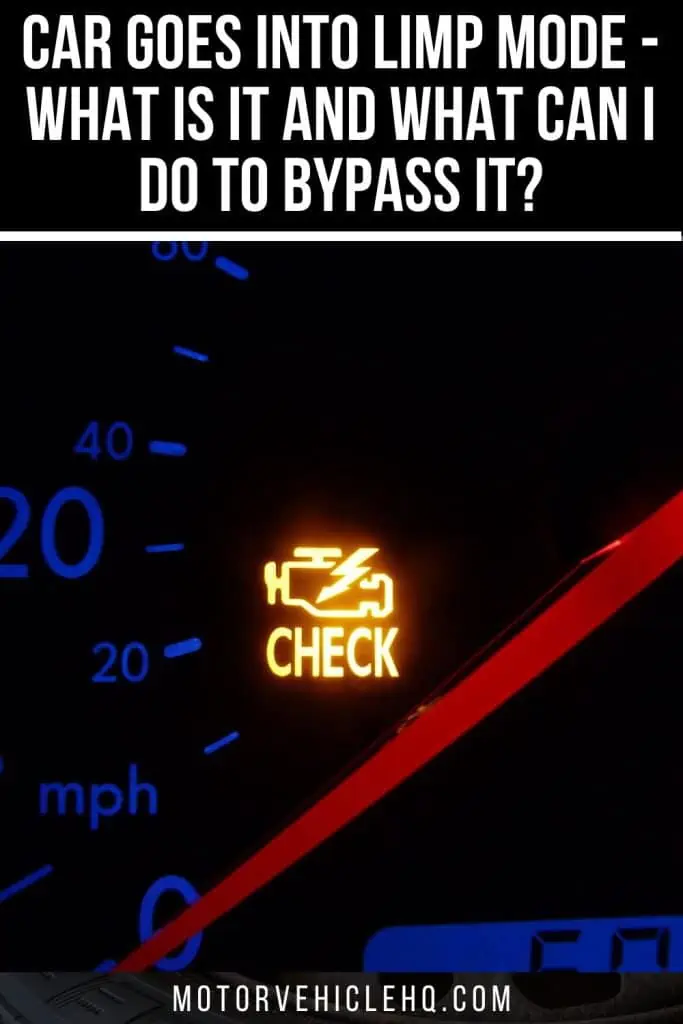
The check engine light by Wikiuser100000 / CC BY-SA 3.0

Jim Wicks is the founder of MotorVehicleHQ. With over two decades of experience in the automotive industry and a degree in Automotive Technology, Jim is a certified car expert who has worked in various roles ranging from a mechanic, car dealership manager, to a racing car driver. He has owned more than 20 cars over the past 15 years. Ask him about any vehicle you see on the road and he can tell you the make, model and year. He loves the aesthetics of all things cars, and keeps his vehicles in pristine condition.
In his free time, Jim enjoys getting his hands dirty under the hood of a classic car or taking long drives along the country roads. His favorite car? A 1967 Shelby GT500, a true classic that, according to Jim, “represents the pure essence of American muscle.”
